Begin at the Mathers Museum of World Cultures and Glenn A. Black Laboratory of
Archaeology at 601 E. 8th Street. The Mathers Museum houses over 30,000 objects
and photographs representing cultures from each of the world's inhabited continents. It is well-known for its artifacts from the Inupiaq, Yupik Eskimo, and Pawnee cultures, traditional musical instruments, and photographs of Native peoples as well as historic images of Bloomington past. The Glenn Black Laboratory is an archeological research and training center focusing on Indiana history and prehistory.
SELF-GUIDED WALKING TOUR - Campus Treasures: From Museums to Memorials
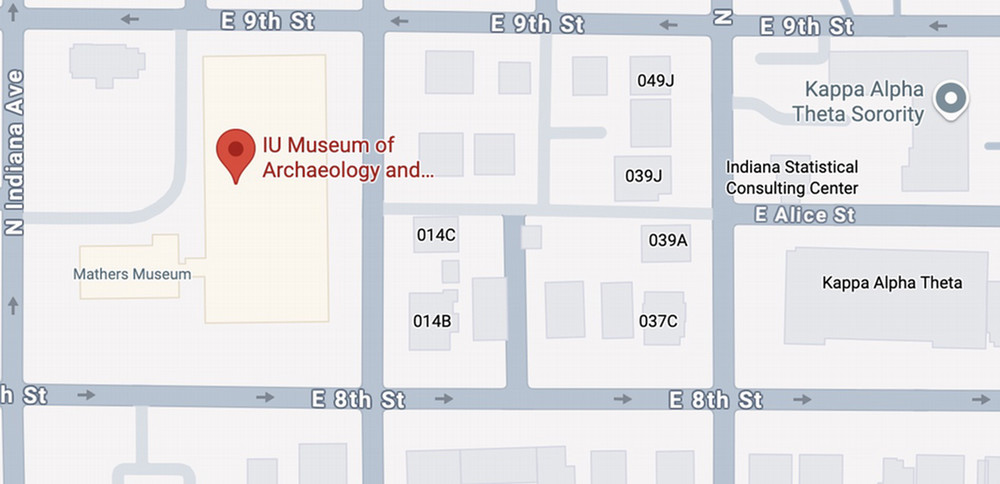
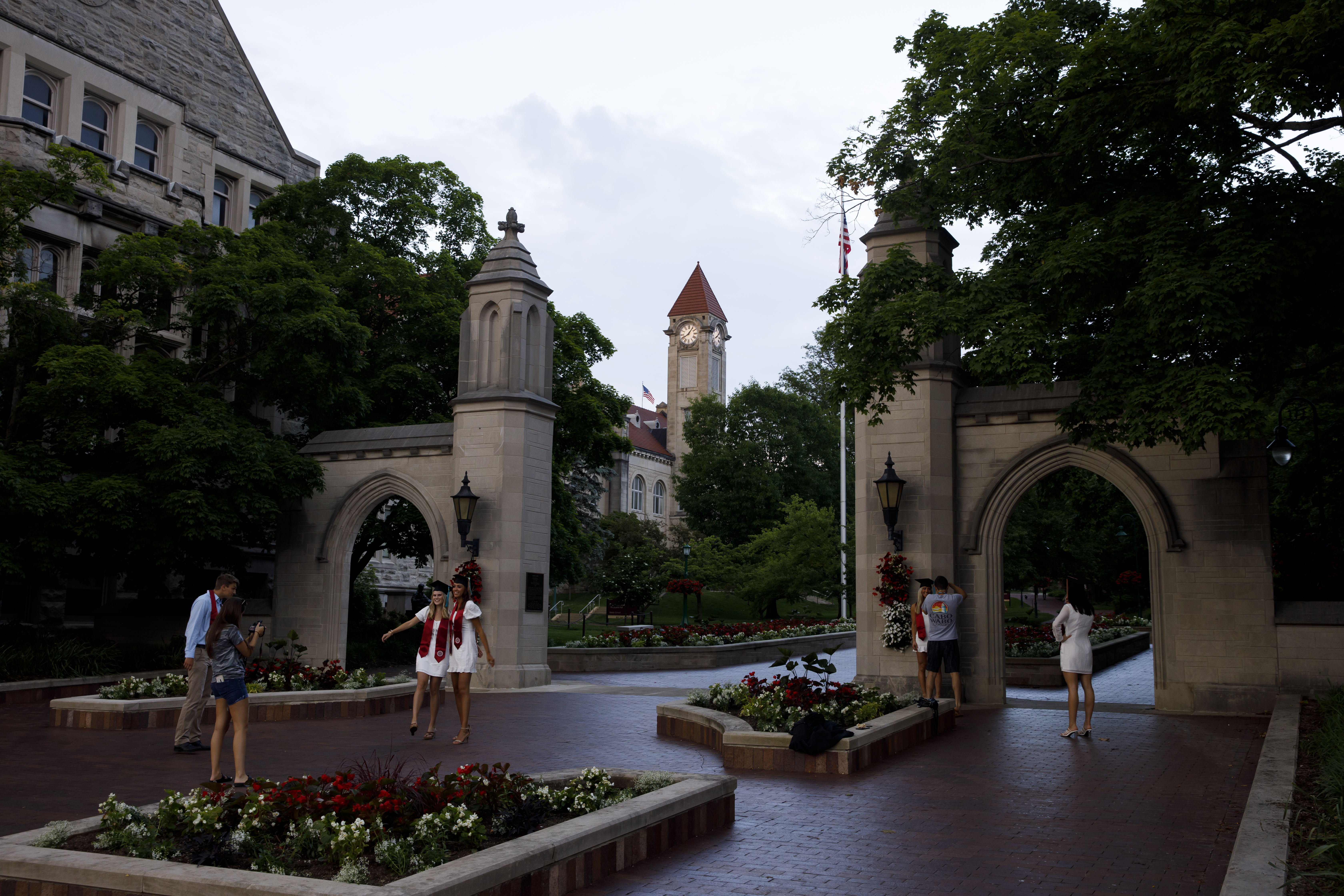
Walk south on Indiana Avenue from 8th Street (passing Dunn Meadow) to the Sample Gates at Kirkwood Avenue. East of the Sample Gates you will see the Student Building (with the clock tower), one of nine university buildings built between 1884 and 1908 making up the “Old Crescent,” which is listed on the National Register of Historic Places.
Walk east further into campus - away from the Sample Gates, following the route from A to B pictured below. On your right, you will pass the Chemistry Building, engraved with element and alchemy symbols on its limestone exterior walls, then Ballantine Hall, the largest academic building on campus at nine stories high. Walk up a hill to the back of Morrison Hall, one of the buildings of the Agnes E. Wells Quadrangle. Morrison Hall is home to the Archives of Traditional Music. The Archives of Traditional Music contains the United States’ largest university-based ethnographic sound archive of the world’s music and oral traditions. Its listening library and Friday noon lecture/concert series are open to the public.
Exit Morrison Hall from the back and follow the wooded path past Bryan House, residence of the university president. You will walk uphill to the Lilly Library, which
houses rare books, manuscripts and related objects. These include a comic book and graphic novel collection, 150,000 pieces of sheet music and 700 incunabula (books printed before 1501).
The Thomas Hart Benton Murals can be viewed inside the IU Auditorium, the old University Theater and Woodburn Hall (on either side of the Lilly Library). The restored murals, have constituted one of the university's—and the state's—greatest artistic treasures. At the same time, they have served as the focus of continued controversy, dispute, and dialogue within the university community.
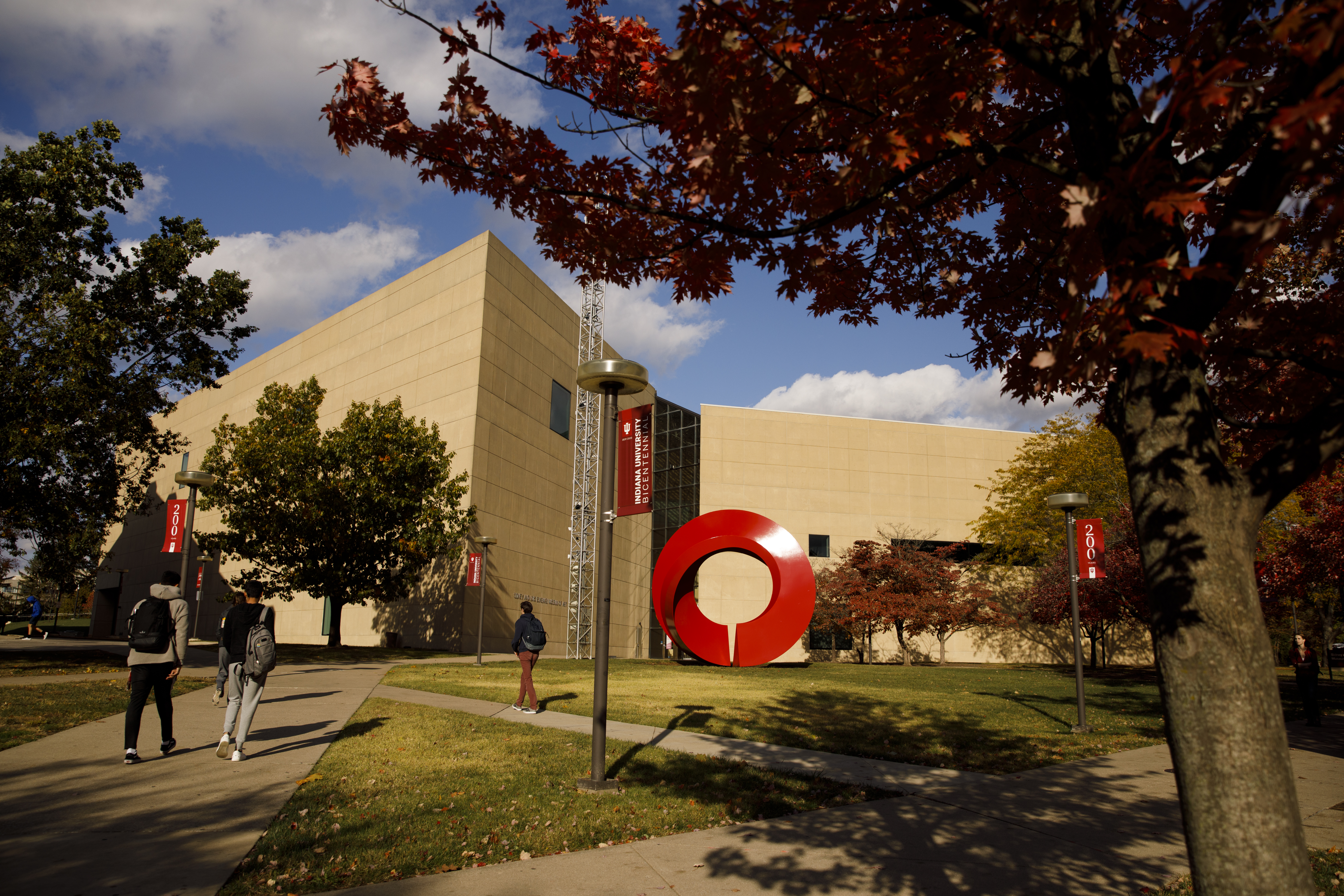
The IU Art Museum and the Henry Radford Hope School of Fine Arts are visible from the front of the Lilly Library. One of the largest university art museums in the country, it contains works such as African masks, ancient jewelry, and works by artists such as Claude Monet, Diego Rivera and Èlisabeth Vigée-LeBrun. The SoFA Gallery inside the School of Fine Arts displays the cutting-edge work of current art students. Both venues host evening events such as gallery walks and coffee house nights that provide opportunies for both viewing art and socializing.
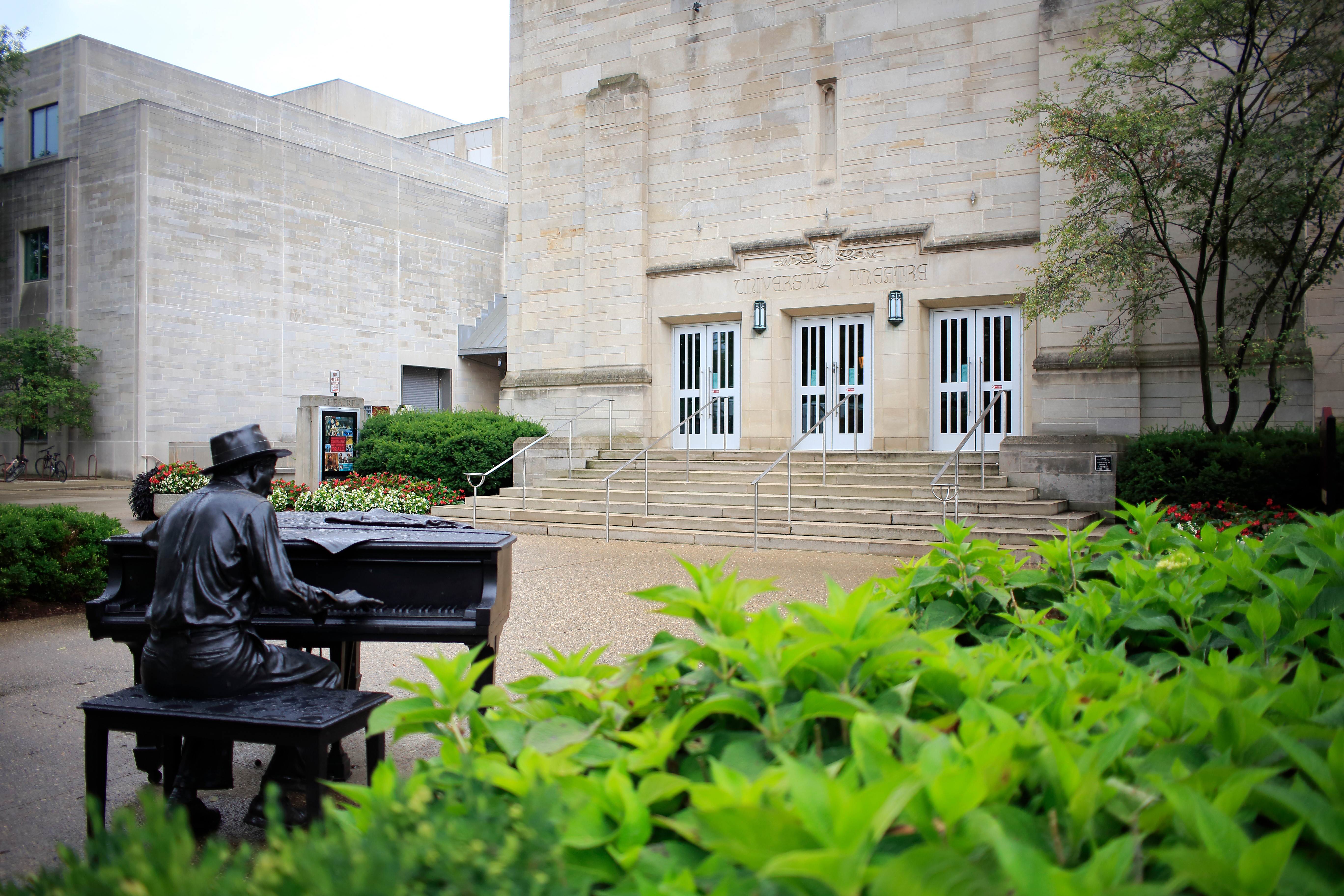
The newest addition to the campus’ stock of outdoor scupture is the bronze Hoagy Carmichael Landmark Sculpture on the walkway between the IU Auditorium and School of Fine Arts. It celebrates Bloomington native and IU alumnus Hoagy Carmichael, who went on to pen jazz standards such as “Stardust” and “Heart and Soul.” The Showalter Fountain in front of the Auditorium features a two-ton sculpture illustrating "The Birth of Venus." Student ire over the dismissal of former IU Basketball coach Bob Knight led to the burglarly of four of the fountain’s fish, which were later returned unharmed.
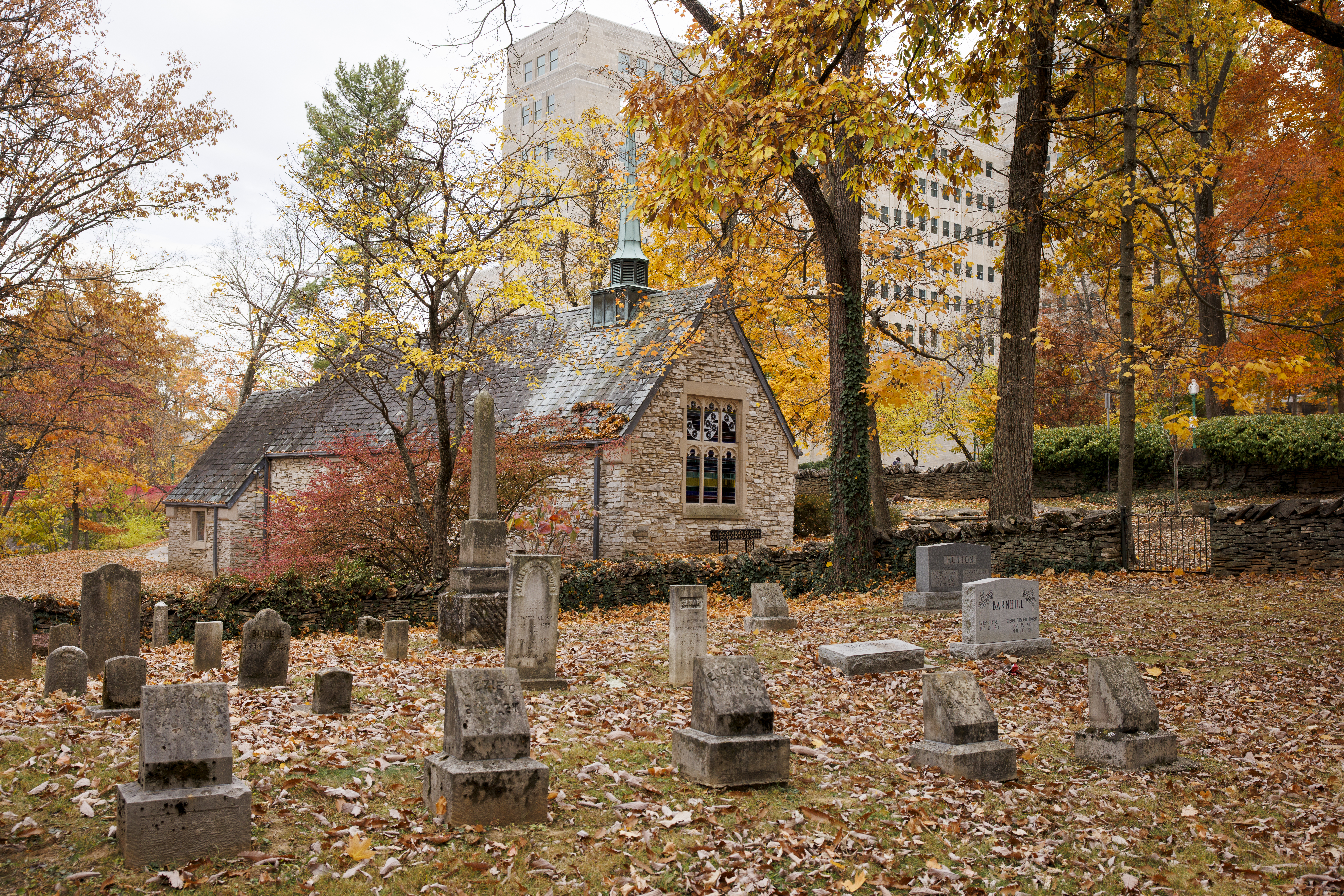
Now walk west on 7th Street to the circle drive in front of the Indiana Memorial Union. Stairs between the parking lot and the building lead to the Dunn Cemetery and Beck Chapel. Dunn Cemetery is what remains of the private land sold by Moses F. Dunn to Indiana University in the late 19th century. Buried there are three sisters who cooked and made clothes for Revolutionary War soldiers. Nearby, Beck Chapel is a small nondenominational chapel where students can spend time in quiet reflection or study. There are copies of the Bible, Koran, and Torah for visitors to use. Each year around 150 wedding ceremonies take place there, many of them between students who met at IU. Beck Chapel is open seven days a week, and during finals week it is open 24 hours a day.
If you’re tired at any point along your way, hop on an IU Campus Bus (free for anyone) or a Bloomington Transit bus ($1.00 for the public, free to students) heading down Third Street.

